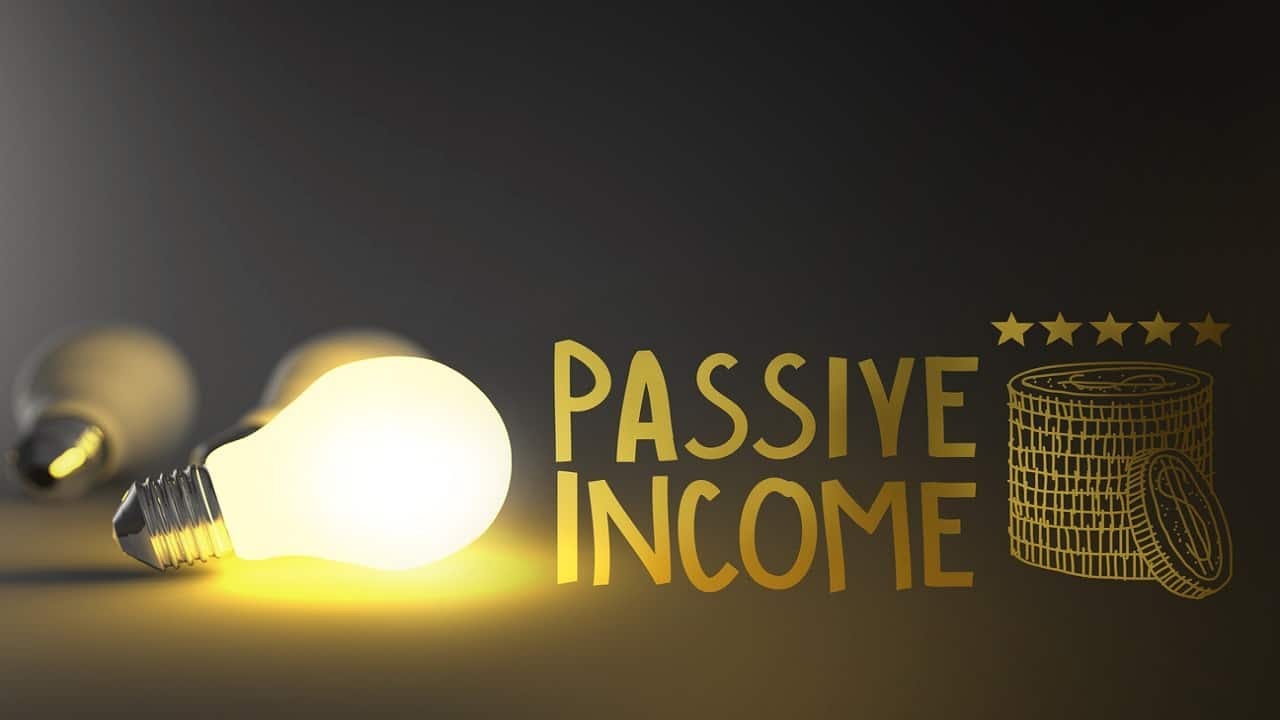10 Ways to Start Building Passive Income Today: A Comprehensive Guide
 Introduction
Introduction
In today's fast-paced economic landscape, the concept of passive income has evolved from a luxury to a necessity for many seeking financial stability and freedom. Passive income—money earned with minimal ongoing effort—represents an opportunity to diversify revenue streams beyond traditional employment. Unlike active income that requires your direct time-for-money exchange, passive income strategies can eventually generate earnings while you sleep, travel, or focus on other priorities. The beauty of passive income lies not in getting rich quickly, but in building sustainable systems that compound over time. This guide explores ten actionable strategies to begin your passive income journey today, regardless of your starting capital or expertise level. Each approach offers unique advantages and challenges, requiring different initial investments of time, money, and skills. By implementing even one or two of these methods consistently, you can begin laying the groundwork for greater financial independence and flexibility in the years ahead.
1. Dividend Investing: Building Wealth Through Company Profits
Dividend investing represents one of the most time-tested passive income strategies, allowing investors to earn regular payments simply for holding shares in profitable companies. When you purchase dividend-paying stocks, you're essentially buying a small ownership stake in businesses that share a portion of their profits with shareholders on a quarterly or annual basis. Companies with long histories of dividend payments, often called "dividend aristocrats," have demonstrated their commitment to shareholder returns through various economic cycles. According to J.P. Morgan Asset Management research, dividend-paying stocks have historically outperformed non-dividend payers over extended periods while providing more stable returns during market downturns. To begin dividend investing, open an account with a reputable broker like Fidelity or Vanguard, research companies with solid dividend histories and sustainable payout ratios, and consider dividend-focused ETFs or index funds for instant diversification. The key advantage of dividend investing lies in its relatively hands-off nature once positions are established—your capital works continuously while requiring only periodic portfolio reviews and rebalancing. For those concerned about market volatility, dividend reinvestment plans (DRIPs) can accelerate wealth-building by automatically purchasing additional shares with each dividend payment, harnessing the power of compounding over decades.
2. Real Estate Investment Trusts (REITs): Real Estate Ownership Without Property Management
Real Estate Investment Trusts offer an accessible entry point into real estate investing without the traditional headaches of property management, tenant issues, or large down payments. REITs are companies that own, operate, or finance income-producing real estate across various sectors including residential apartments, commercial office buildings, shopping centers, healthcare facilities, and specialized industrial properties. By law, REITs must distribute at least 90% of their taxable income to shareholders as dividends, making them particularly attractive for income-focused investors. According to Nareit, equity REITs have delivered competitive total returns averaging approximately 9.5% annually over the past 20 years. Investors can purchase REIT shares through standard brokerage accounts, retirement plans, or even through REIT-focused ETFs like Vanguard Real Estate ETF (VNQ) for broader diversification. Morningstar analysis suggests that REITs often perform differently than other stock market sectors, potentially providing portfolio diversification benefits during certain economic conditions. The beauty of REIT investing lies in its liquidity compared to direct property ownership—you can buy or sell shares instantly during market hours without the lengthy processes involved in traditional real estate transactions. For beginners, consider starting with established REITs having strong balance sheets, reasonable debt levels, and portfolios focused on growing markets or specialized sectors with favorable long-term outlooks.
3. Creating and Selling Digital Products: Leveraging Your Knowledge and Skills
The digital product marketplace has exploded in recent years, creating unprecedented opportunities to generate passive income by selling downloadable assets that require no inventory, shipping, or physical production costs. From e-books and online courses to templates, stock photography, music, or software tools, digital products allow creators to package their expertise into scalable, instantly-deliverable formats. According to Teachable's Creator Report, the average instructor on their platform earns approximately $8,000 annually, with top performers generating six-figure incomes from their digital courses. Platforms like Gumroad have simplified the selling process through streamlined storefronts, payment processing, and delivery systems that operate 24/7. The most successful digital product creators typically focus on solving specific problems for well-defined audiences—whether teaching accountants to use specialized software, helping parents navigate homeschooling challenges, or providing designers with time-saving Photoshop templates. While creating high-quality digital products requires significant upfront investment of time and expertise, the ongoing maintenance costs remain minimal compared to physical product businesses. Many creators start with smaller, lower-priced products to validate market demand before developing comprehensive premium offerings. The true passive income potential emerges once your marketing systems are optimized and your products have accumulated positive reviews and testimonials, allowing new sales to occur with decreasing promotional effort over time.
4. Affiliate Marketing: Earning Commissions Through Trusted Recommendations
Affiliate marketing transforms your recommendations and product knowledge into commission opportunities by rewarding you when your audience purchases products through your unique tracking links. Unlike direct selling, affiliate marketing requires no inventory, customer service, or product fulfillment responsibilities—you simply connect potential buyers with relevant solutions while earning a percentage of resulting sales. According to Awin's Affiliate Marketing Report, the global affiliate marketing industry exceeds $12 billion annually and continues growing as companies increasingly shift advertising budgets toward performance-based channels. Successful affiliate marketers typically build authority platforms through blogs, YouTube channels, social media accounts, or email newsletters focused on specific niches where product recommendations naturally complement their content. Amazon Associates, one of the largest affiliate programs, allows promotion of millions of products with commission rates ranging from 1-10% depending on category. Higher-commission opportunities exist through specialized affiliate networks like ShareASale or Impact, where software, financial, and educational products often offer 30-50% commission rates or recurring revenue shares for subscription services. The passive income potential in affiliate marketing develops gradually as you build content assets that continue generating traffic and conversions with minimal ongoing maintenance—many established affiliates report that articles or videos created years ago still produce consistent monthly commissions. For beginners, focus first on delivering genuine value through honest, helpful content rather than aggressive promotion, as today's consumers increasingly recognize and reject purely sales-driven approaches.
5. Peer-to-Peer Lending: Becoming the Bank for Borrowers
Peer-to-peer lending platforms have democratized the lending landscape, allowing individual investors to function as mini-banks by funding personal and business loans directly to borrowers while earning interest payments as passive income. Unlike traditional bank deposits offering minimal returns, P2P lending can generate annual yields ranging from 4-12% depending on your risk tolerance and loan selection strategy. According to LendingClub's statistics, investors who diversify across hundreds of small loan portions have historically experienced returns exceeding most fixed-income alternatives, albeit with different risk profiles. Modern P2P platforms like Prosper and Peerform employ sophisticated credit algorithms to evaluate borrowers, assign risk ratings, and determine appropriate interest rates, significantly streamlining the investment process compared to early industry iterations. The passive income advantage emerges once you've established a diversified loan portfolio—principal and interest payments flow into your account on a monthly basis, ready for withdrawal or reinvestment into new loans. Experienced P2P investors often develop custom investment strategies based on their financial goals, such as focusing exclusively on debt consolidation loans, targeting specific credit score ranges, or lending to small businesses in particular industries. While loan defaults remain an inherent risk, particularly during economic downturns, most platforms offer historical performance data to help investors calibrate their expectations. For beginners, start with modest allocations and emphasize diversification across numerous loans to mitigate the impact of occasional defaults on overall portfolio performance.
6. Rent Out Assets You Already Own: From Spare Rooms to Equipment
The sharing economy has created remarkable opportunities to generate passive income from assets you already own but don't fully utilize. Platforms like Airbnb have transformed spare bedrooms and second homes into profitable rentals, with the average U.S. host earning approximately $9,000 annually according to company data. Beyond residential space, specialized marketplaces enable monetizing nearly any valuable asset: Turo for vehicles, KitSplit for camera equipment, Spacer for storage areas, and Swimply for private pools. The advantages of asset rental extend beyond immediate cash flow—these platforms typically provide insurance protection, payment processing, and marketing systems that simplify the logistics of finding and managing renters. While the "passive" nature varies depending on the asset type (managing vacation rentals requires more ongoing effort than renting equipment), many hosts eventually systematize their operations through cleaning services, lockbox systems, or property managers to minimize personal involvement. The most successful asset renters carefully analyze their market positioning, pricing strategies, and customer experience to maximize occupancy rates and positive reviews. For those concerned about property wear and tear, consider specializing in business travelers or establishing clear usage guidelines with security deposits. Start by identifying your most underutilized high-value assets and researching which platforms serve your specific category with the strongest renter demand in your location.
7. Create a YouTube Channel: Building a Video Content Library
YouTube has evolved from a simple video-sharing site into one of the world's most powerful passive income platforms, allowing creators to build monetized content libraries that continue generating views and revenue for years after publication. Unlike traditional media requiring gatekeepers' approval, YouTube enables anyone to develop audiences around virtually any topic, from cooking techniques and financial advice to gaming strategies and educational content. According to YouTube's own statistics, creators with 1,000+ subscribers and 4,000 watch hours can join the YouTube Partner Program, monetizing content through advertising revenue, channel memberships, Super Chat, and merchandise shelf features. While building a successful channel requires significant upfront investment in content creation, equipment, and audience development, the passive income potential emerges once your video library reaches critical mass. Many established YouTubers report that their "back catalog" of older videos generates 50-70% of their monthly revenue with zero additional effort. Social Blade data suggests that mid-tier creators with 100,000 subscribers typically earn $2,000-$5,000 monthly, while channels reaching 1 million subscribers can generate six-figure annual incomes. Beyond direct YouTube monetization, successful creators leverage their audience to develop additional passive income streams through affiliates, sponsored content, and product sales. For beginners, focus on creating highly valuable evergreen content (information that remains relevant for years) rather than news or trend-dependent topics that quickly become outdated and lose viewership.
8. Build a Subscription-Based Business: Recurring Revenue Models
Subscription business models represent perhaps the most powerful passive income opportunity in today's digital economy, generating predictable recurring revenue while providing customers with continuous value through content, services, software, or physical products delivered on a regular schedule. The subscription economy has experienced explosive growth, with Zuora's Subscription Economy Index reporting that subscription businesses grow revenue nearly 5 times faster than S&P 500 companies. Entrepreneurs can leverage platforms like Substack for premium newsletters, Patreon for creator memberships, Teachable for online courses, or Shopify with subscription apps for physical product deliveries. The passive income advantage of subscription models emerges from their retention-focused nature—once you've acquired customers who receive ongoing value, they often remain subscribers for years with minimal marketing effort compared to single-purchase businesses. Successful subscription entrepreneurs typically focus first on reducing churn (customer cancellations) through consistent quality, community building, and regular improvements rather than solely pursuing new customer acquisition. While building the initial subscriber base requires significant effort, operations often become increasingly automated as systems and fulfillment processes mature. For beginners, start by identifying a specific audience segment with a recurring problem your subscription can solve consistently, then test your concept with a minimum viable product before investing heavily in sophisticated delivery infrastructure.
9. License Your Photography or Creative Work: Monetizing Intellectual Property
Licensing creative assets represents an often-overlooked passive income opportunity for photographers, designers, musicians, and other creators to monetize their work repeatedly without relinquishing ownership. Stock photography platforms like Shutterstock, Adobe Stock, and Getty Images enable photographers to earn royalties whenever their images are downloaded by subscribers, with successful contributors generating thousands monthly from extensive portfolios. Beyond photography, marketplaces like Envato Elements allow designers to license graphics, templates, fonts, and video assets, while Pond5 and Epidemic Sound serve videographers and musicians respectively. According to Shutterstock's contributor earnings report, their top photographers earn over $100,000 annually, though most contributors make modest supplementary income. The passive income advantage emerges as your portfolio grows—each new asset adds incremental earning potential while existing works continue generating royalties indefinitely. Successful creative licensors typically focus on identifying commercial demand patterns rather than pursuing purely artistic expression, creating assets that solve specific business communication needs. Metadata optimization, including accurate keywording and descriptions, plays a crucial role in making your content discoverable within vast marketplace catalogs. For beginners, research top-selling content categories before production, focus on technical excellence and commercial utility, and commit to consistent uploads to build a substantial portfolio, as volume often correlates strongly with licensing success.
10. Automated E-commerce: From Dropshipping to Print-on-Demand
E-commerce has undergone a remarkable evolution, with modern fulfillment models enabling entrepreneurs to build increasingly passive online retail businesses without inventory investments or shipping logistics. Dropshipping platforms like Oberlo and Spocket allow merchants to list products that ship directly from suppliers to customers, never touching inventory themselves. Print-on-demand services such as Printful and Printify manufacture custom-designed products only after purchase, eliminating upfront production costs and unsold inventory risks. According to Shopify's research, the global dropshipping market exceeded $128 billion in 2020 and continues growing rapidly. The passive income potential develops as you build automated systems for customer acquisition, implement chatbots for common service inquiries, and establish standard operating procedures that virtual assistants can execute. Successful automated e-commerce entrepreneurs focus heavily on building conversion-optimized storefronts, developing unique brand positioning, and implementing extensive product testing to identify winners before scaling marketing investments. While pure dropshipping faces increasing competition, specialized niches with curated product selections, superior customer experience, and value-added content typically achieve sustainable differentiation. For beginners, consider starting with print-on-demand models that offer greater customization opportunities and brand control, focusing initially on targeted Facebook or Pinterest advertising to reach specific demographic segments with product designs tailored to their interests.
Conclusion
Embarking on your passive income journey requires strategic thinking, realistic expectations, and consistent action over time. The most successful passive income builders typically start with methods aligned with their existing skills, interests, and financial situations, gradually expanding into additional streams as their experience and capital grow. Remember that truly passive income rarely exists at the beginning—most strategies require significant upfront investment of time, money, or expertise before evolving into more hands-off revenue sources. Consider combining complementary approaches, such as reinvesting dividend income into digital product development or leveraging a YouTube audience to promote affiliate offers. Track your results methodically, focusing on hourly return on investment rather than raw income figures to identify your most efficient opportunities. Start small, learn continuously, and remain patient as your passive income streams develop momentum. The financial freedom and flexibility that come from diversified passive income seldom arrive overnight, but the compounding benefits make the journey worthwhile—potentially transforming your relationship with work, time, and money for decades to come.

